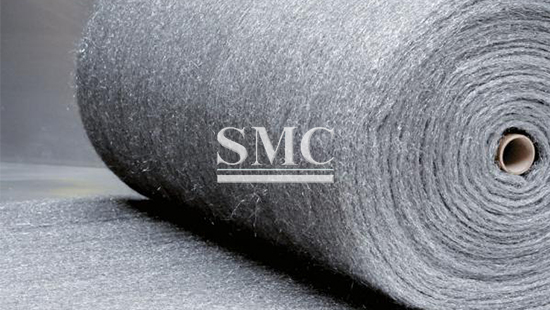
- Company overview The heart of SMC Vision & Philsophy Partnership Certifications Company culture
- Our service Design and Engineering Maintenance and Service Examine Production Line Upgrade and Transformation Storage and Logistics Processing, Trading and Distributor
- Management Our history Global responsibility Info Center
- Procurement center Internship
- Metal Steel Products Stainless Steel Products Aluminum Products Copper Products Galvanized Steel and PPGI Special Alloy Building Material
- Containers ISO Standard Container Equipment Container Storage Container Refrigerated/Reefer Container Offshore Container Container House Tank Container Container Fittings Container Trailer
- Gas Cylinder & Fire Extinguisher Cryogenic Liquid Cylinder Oxygen Gas Cylinder Storage Tank CNG Gas Cylinder LPG Gas Cylinder Hydrogen Gas Cylinder Nitrogen Gas Cylinder Industry Gas Cylinder Fire Extinguisher
- Metal Machinery Forming Machine Cutting Machine Processing Machine Bending Machine Block Machine Other Machinery Motor Spare Parts
- Mechanical Products Miscellany Mooring Equipment Marine Equipment Vehicle Industry Pressure Vessel Conveyor Belt Laser Equipment Bearing
- Electrical System Power Distribution Automation Electrical Cable Solar Power System Electric Protection System Transformer Production Line Lighting System
- Project Plastic Pipes and Pipe Fittings Fiberglass Reinforced Plastic Pontoon System
Detailed Introduction of Stainless Steel Fiber
Stainless steel fiber, a new type of industrial material, not only has high conductivity, high thermal conductivity, high strength, high temperature resistance, corrosion resistance and other properties, but also has the characteristics of chemical fiber and synthetic fiber; currently widely used in petroleum, chemical, chemical fiber, electronics, Textile, military, aviation, polymer materials, environmental protection and other industrial fields.
Use characteristics
Stainless steel fiber is also called stainless steel ultra-fine filament.
Stainless steel fiber is an extremely fine stainless steel wire. Stainless steel fibers are thinner than hair silk, softer than cotton, and feel better than silk. They have the characteristics of miniaturization and softening, plus the bright and beautiful metallic luster of stainless steel fibers and their special conductivity and shielding electromagnetic waves And other functions, in recent years, the application of stainless steel fibers in the textile industry has increased.
Production method
The production methods of stainless steel fiber include the traditional wire drawing and cutting method, as well as the melt drawing method, the cluster drawing method, the scraping method, and the cutting method. At present, the smallest diameter of the fiber can reach 0.5 microns, and the longest can reach tens of meters or even hundreds of meters.
Today, most of the world's large-scale manufacturers of high-strength ultra-fine metal fiber high-end products use the cluster drawing method.

Performance
Ferromagnetic, electrical properties, surface treatment, friction coefficient, and versatility of stainless steel fibers.
Ferromagnetism of stainless steel fiber:
As the fiber diameter decreases, its saturation magnetization increases. As the fiber diameter decreases, The content of the martensite phase is increasing, and the characteristic diffraction peak intensity is also significantly increased. After the grain size is reduced to a certain extent, the exchange coupling between the grains enhances the material's remanence, decreases the coercive force, and increases the magnetic permeability. The reason that austenitic fibers have weak magnetism may be caused by stress-induced martensite transformation. The main component of austenitic stainless steel fibers is also iron. It is also possible that the smaller the fiber diameter, the closer the iron element in the structure is to ferromagnetic. State of space. Within a certain range, as the wire diameter becomes smaller, the magnetism increases. The magnetic properties of 8UM fibers are 3-6 times higher than that of 20UM and 12UM fibers. The magnetic properties of 6UM-2U fibers are less than that of 8UM stainless steel fibers; the fibers are paramagnetic after annealing. Pure austenite phase fibers are relatively weak in magnetic properties. Annealing can transform the fiber structure into single austenite, and its characteristic peaks of martensite diffraction appear weakened or disappear. The martensite phase fiber is strong in magnetic properties, and its strength exceeds that of the nickel matrix.
Electrical performance of stainless steel fiber:
The smaller the fiber diameter, the higher the electrical resistivity; the smaller the fiber diameter, the lower the axial conductivity of the fiber, and the higher the electrical resistance. As the diameter becomes smaller, changes in phase transition, crystal sequence transition, and magnetic transition affect resistivity, and the crystal has orientation and texture.
Surface treatment of stainless steel fiber:
Production process of stainless steel fiber, copper plating / tie head / piercing—drawing / annealing—acid electrolytic separation—cleaning and drying. The acid hydrolysis separation process adopts the Manjing technology DMJ03 system to achieve rapid peeling, and the dispersive passivation process is performed simultaneously.
Surface friction coefficient of stainless steel fiber:
The smaller the fiber diameter, the larger the friction coefficient, and the more obvious the performance of the special fiber. In theory, the paving surface is more uniform. Due to its special functionality, the space environment and processing technology of the paving process may need to be changed to better material functionality.
Versatility of stainless steel fibers:
Conductive, anti-electromagnetic wave, sound-absorbing, filtering, anti-static, abrasion-resistant, high temperature resistance, cutting resistance, etc.
For more information, please visit:https://shanghaimetal.com/Metal-18.html
For our full list of products that we offer check out our website here. Be sure to join the conversation in our LinkedIn group, Facebook, Twitter.
Try also our We Chat by scanning the QR code below.
Sunny Y.//SMC Editor

